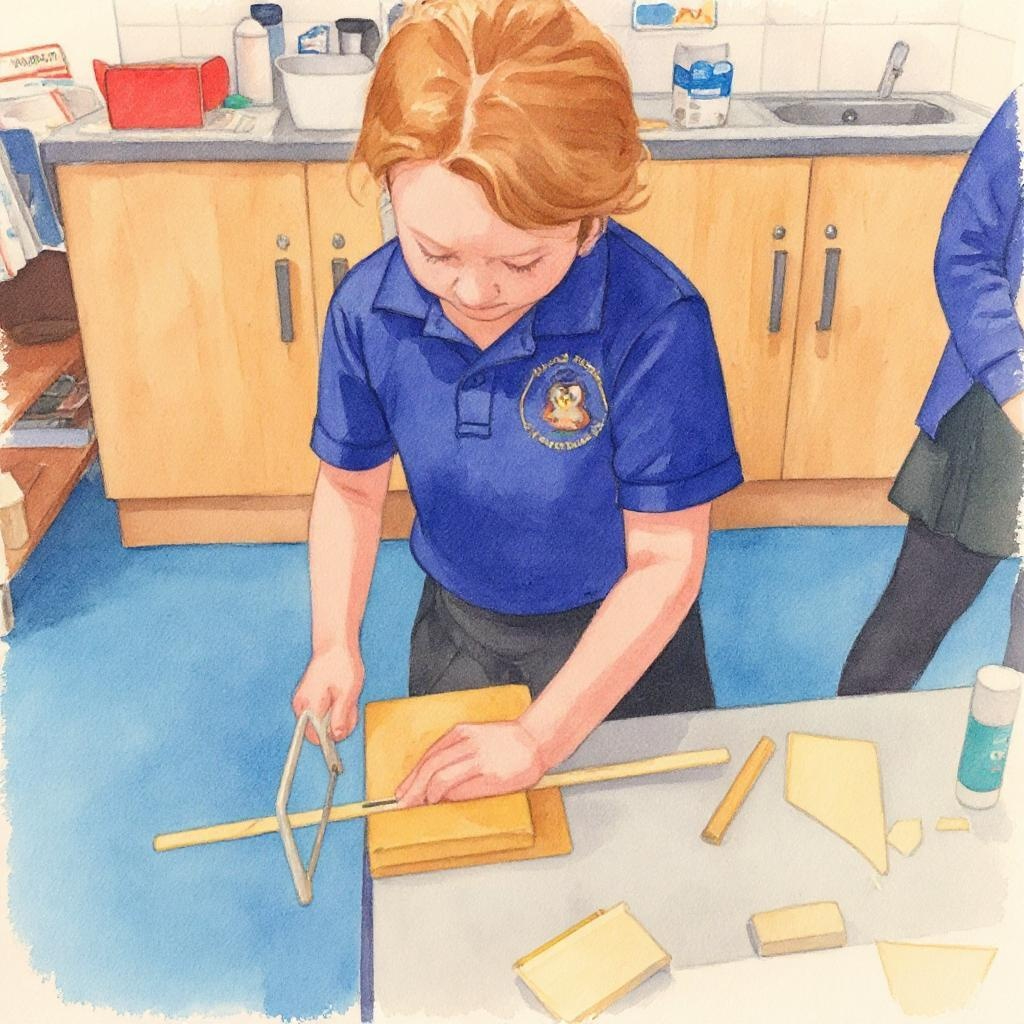The study of design technology gives learners the opportunity to develop unique skills related to the development of products and innovation. Our curriculum has been designed to allow learners to apply their knowledge and understanding gained in other areas of the curriculum in order to develop skills in food technology, engineering, functional & aesthetic design and production, textiles, and systems and control.
Learners will gain an understanding of the ways in which people have designed products in the past and present gaining a deeper understanding of their impact in daily life and the wider world, both now and for the future. They will improve their knowledge of materials and the ways they can be shaped and manipulated. The opportunities and experiences provided for learners are intended to reflect a design cycle – design, make and evaluate.
As a result of our Design Technology curriculum, children are encouraged to generate ideas and designs, discuss features of their designs and communicate them through annotated sketches, diagrams, prototypes, pattern pieces and computer aided design. Children are taught to select and use appropriate materials, equipment and tools safely in order to develop essential skills such as measuring, marking out, cutting and joining.
Children will evaluate and test their finished products, describing how and why they work. They will also evaluate design and technology from the past, explaining how and why existing products work. Evaluation and reflection will be both ongoing during the DMA process and summative upon completion of the process or finished product.
Our aspiration is that children are inspired to be curious about different products and types of technology and develop their knowledge of how to design and create them both in and out of school.
To be successful, learners must:
-
design and make products that solve real and relevant problems and meet specific needs.
-
Design, develop and produce prototypes and use products for a wide range of audiences.
-
use of a range of materials and components and develop skills and key techniques as part of the practical process of production
-
evaluate materials, processes and products
-
develop the appropriate vocabulary and subject-specific terminology to describe how and why existing products work and evaluate their fitness for purpose.
-
Understand the effects of technology on people’s lives and the wider world
-
Connect learning within different aspects of design technology and between design technology and other subjects (e.g. history)
-
Engage with the diversity of technological products, including ethical issues

EYFS Expressive Arts and Design
The development of children’s artistic and cultural awareness supports their imagination and creativity. It is important that children have regular opportunities to engage with the arts, enabling them to explore and play with a wide range of media and materials. The quality and variety of what children see, hear and participate in is crucial for developing their understanding, self-expression, vocabulary and ability to communicate through the arts. The frequency, repetition and depth of their experiences are fundamental to their progress in interpreting and appreciating what they hear, respond to and observe
Toddlers and young children will be learning to:
-
Start to develop pretend play, pretending that one object represents another. For example, a child holds a wooden block to her ear and pretends it’s a phone
-
Explore different materials, using all their senses to investigate them. Manipulate and play with different materials.
-
Use their imagination as they consider what they can do with different materials.
-
Make simple models which express their ideas.
3 and 4-year-olds will be learning to:
-
Take part in simple pretend play, using an object to represent something else even though they are not similar.
-
Begin to develop complex stories using small world equipment like animal sets, dolls and dolls houses, etc.
-
Make imaginative and complex ‘small worlds’ with blocks and construction kits, such as a city with different buildings and a park
-
Explore different materials freely, to develop their ideas about how to use them and what to make.
-
Develop their own ideas and then decide which materials to use to express them.
-
Join different materials and explore different textures.
Children in reception will be learning to:
-
Explore, use and refine a variety of artistic effects to express their ideas and feelings
-
Return to and build on their previous learning, refining ideas and developing their ability to represent them.
-
Create collaboratively, sharing ideas, resources and skills
DT Skills and Progression Overview
Implementation